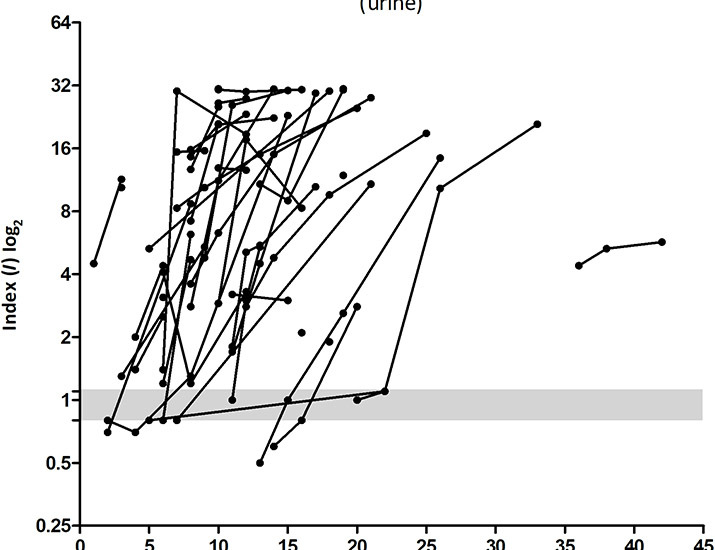Fernanda Ludolf:
ORCID: https://orcid.org/0000-0003-3357-9816
Role: ConceptualizationRole: Data curationRole: Formal analysisRole: InvestigationRole:
MethodologyRole: Project administrationRole: SupervisionRole: ValidationRole: VisualizationRole:
Writing - original draftRole: Writing - review & editing
Fernanda F. Ramos:
ORCID: https://orcid.org/0000-0002-7852-0300
Role: Formal analysisRole: InvestigationRole: MethodologyRole: ValidationRole: Writing
- review & editing
Flávia F. Bagno:
ORCID: https://orcid.org/0000-0003-1578-6678
Role: ConceptualizationRole: Data curationRole: Formal analysisRole: InvestigationRole:
MethodologyRole: ResourcesRole: SoftwareRole: ValidationRole: Writing - review & editing
João A. Oliveira-da-Silva: Role: MethodologyRole: Resources
Thiago A. R. Reis: Role: Resources
Myron Christodoulides:
ORCID: https://orcid.org/0000-0002-9663-4731
Role: VisualizationRole: Writing - review & editing
Paula F. Vassallo:
ORCID: https://orcid.org/0000-0002-7531-0607
Role: ConceptualizationRole: Data curationRole: InvestigationRole: MethodologyRole:
ResourcesRole: Writing - review & editing
Cecilia G. Ravetti: Role: InvestigationRole: MethodologyRole: Resources
Vandack Nobre:
ORCID: https://orcid.org/0000-0002-7922-0422
Role: ConceptualizationRole: Data curationRole: Funding acquisitionRole: InvestigationRole:
Project administrationRole: ResourcesRole: Writing - review & editing
Flavio G. da Fonseca:
ORCID: https://orcid.org/0000-0002-1416-8694
Role: ConceptualizationRole: Funding acquisitionRole: MethodologyRole: Project administrationRole:
ResourcesRole: SupervisionRole: ValidationRole: VisualizationRole: Writing - review
& editing
Eduardo A. F. Coelho: Role: ConceptualizationRole: Data curationRole: Project administrationRole: VisualizationRole:
Writing - review & editing
Journal ID (nlm-ta): Sci Adv
Journal ID (iso-abbrev): Sci Adv
Journal ID (publisher-id): sciadv
Journal ID (hwp): advances
Title:
Science Advances
Publisher:
American Association for the Advancement of Science
ISSN
(Electronic):
2375-2548
Publication date Collection:
May
2022
Publication date
(Electronic, pub):
13
May
2022
Volume: 8
Issue: 19
Electronic Location Identifier: eabn7424
Affiliations
[1
]Programa de Pós-Graduação em Ciências da Saúde, Infectologia e Medicina Tropical,
Faculdade de Medicina, Universidade Federal de Minas Gerais, Belo Horizonte 30.130-100,
Minas Gerais, Brazil.
[2
]Laboratório de Virologia Básica e Aplicada, Departamento de Microbiologia, Instituto
de Ciências Biológicas, Universidade Federal de Minas Gerais, Belo Horizonte 31.270-901,
Minas Gerais, Brazil.
[3
]Centro de Tecnologia em Vacinas (CT Vacinas), BH-Tec, Universidade Federal de Minas
Gerais, Belo Horizonte 30.130-100, Minas Gerais, Brazil.
[4
]Neisseria Research Group, Molecular Microbiology, School of Clinical and Experimental
Sciences, University of Southampton Faculty of Medicine, Southampton General Hospital,
Southampton SO16 6YD, UK.
[5
]Hospital das Clínicas, Universidade Federal de Minas Gerais, Belo Horizonte 30.130-100,
Minas Gerais, Brazil.
[6
]Departamento de Clínica Médica, Faculdade de Medicina, Universidade Federal de Minas
Gerais, Belo Horizonte 30.130-100, Minas Gerais, Brazil.
[7
]Departamento de Patologia Clínica, COLTEC, Universidade Federal de Minas Gerais, Belo
Horizonte 31.270-901, Minas Gerais, Brazil.
Author notes
[†]
These authors contributed equally to this work as co–senior authors.
Author information
Article
Publisher ID:
abn7424
DOI: 10.1126/sciadv.abn7424
PMC ID: 9106288
PubMed ID: 35559681
SO-VID: 9506eb35-d544-4834-a4ed-bfa2b78a9529
Copyright © Copyright © 2022 The Authors, some rights reserved; exclusive licensee American Association
for the Advancement of Science. No claim to original U.S. Government Works. Distributed
under a Creative Commons Attribution License 4.0 (CC BY).
License:
This is an open-access article distributed under the terms of the
Creative Commons Attribution license, which permits unrestricted use, distribution, and reproduction in any medium, provided
the original work is properly cited.
Funded by:
FundRef http://dx.doi.org/10.13039/501100003593, Conselho Nacional de Desenvolvimento Científico e Tecnológico;
Award ID: APQ-408675/2018-7
Funded by:
Brazilian Ministry of Science, Technology and Innovation;
Award ID: Rede Virus initiative
Funded by:
Secretaria de Educação / MEC;
Award ID: 04/2020
Subject:
Research Article
Subject:
Biomedicine and Life Sciences
Subject:
SciAdv r-articles
Subject:
Health and Medicine
Subject:
Coronavirus


